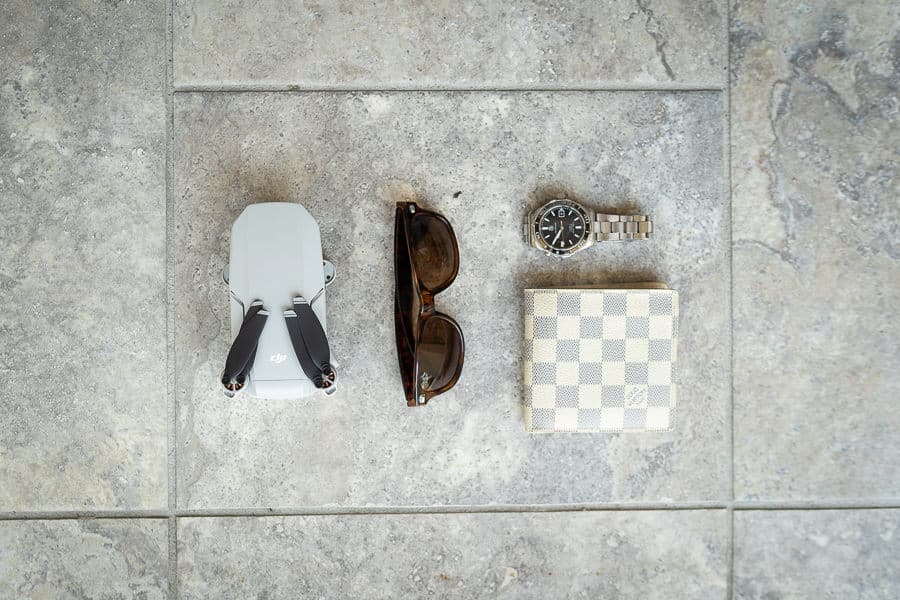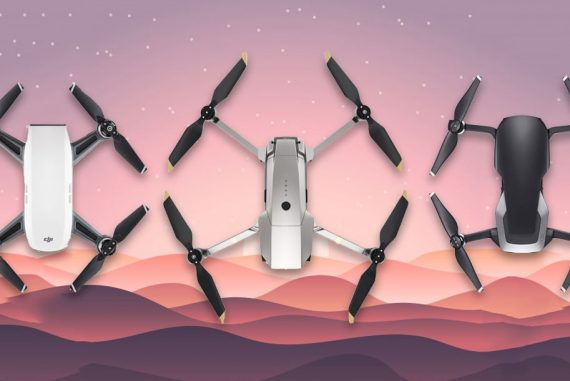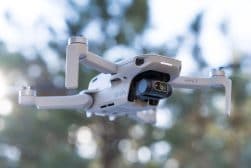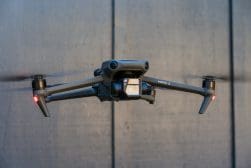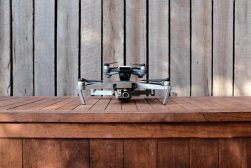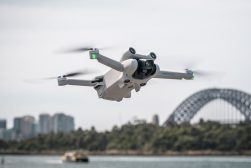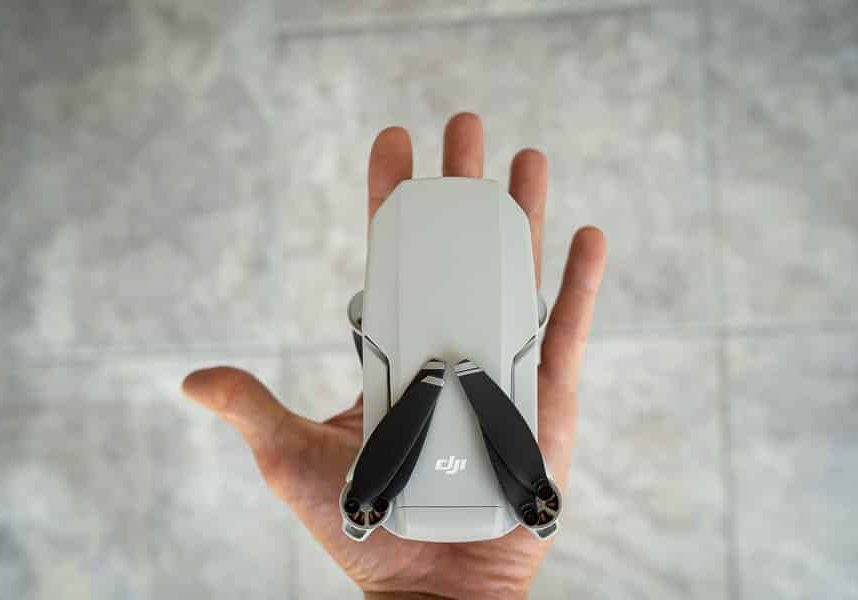
DJI Mavic Mini Drone Review (Specs & Opinion)
Real-world review by a professional photographer of the Mavic Mini drone from DJI. Can a sub 500gram, sub $500 drone take good images and video? Find out here!
This is a DJI Mavic Mini review that I never thought I’d be writing. Here I am after 4 weeks of testing, itching to tell every other photographer about this little flying marvel.
Aside from being the smallest, lightest and best value mini camera drone out of all those on offer by DJI in 2024, it’s also the quietest and most simple and fun to use.

Powerful, light, affordable, fun: this pocket-size drone is every photographer’s new favourite toy.
I’d go as far as to say that I think that every photographer, professional or amateur, should seriously consider buying a Mavic Mini. It’s also a great drone for a 12-year old or pre-teen interested in aerial photography.
Whether you want to shoot unique bird’s-eye-view photos that offer another glimpse of the world, or simply want to be able to scout a location for photo opportunities from above, flying a drone is a truly eye-opening experience.
…and DJI has just made this a whole lot easier with the Mavic Mini.
(See our DJI Mini 2 review and Mini 3 Pro review for more recent models.)
What is the DJI Mavic Mini?
- Affordable
- Super easy to use
- Light and pocketable
- 3-axis gimbal stabilization
- Excellent battery life
- Limited obstacle avoidance
- No RAW files
The Mavic Mini is DJI’s smallest, lightest drone that allows you to shoot videos and still images from the sky.
You control it via a remote control (included) that connects to your smartphone, using the phone’s screen as a way to view what the drone sees.
Videos and photos are transferred to a micro SD card (not included) housed in the drone’s body, and can be viewed instantly on your smartphone too.
Footage can be organised, edited and shared using the simple to use DJI Fly smartphone app for iOS and Android (free).
Mavic Mini | Specs
- Weight: 249 g
- Folded Dimensions: 140×82×57 mm (L×W×H)
- Unfolded: 160×202×55 mm (L×W×H)
- Max Speed: 13 m/s (S Mode)
- Max Service Flying Height: 3000 m
- Max Flight Time: 30 minutes
Why is the Mavic Mini’s Weight so Important?
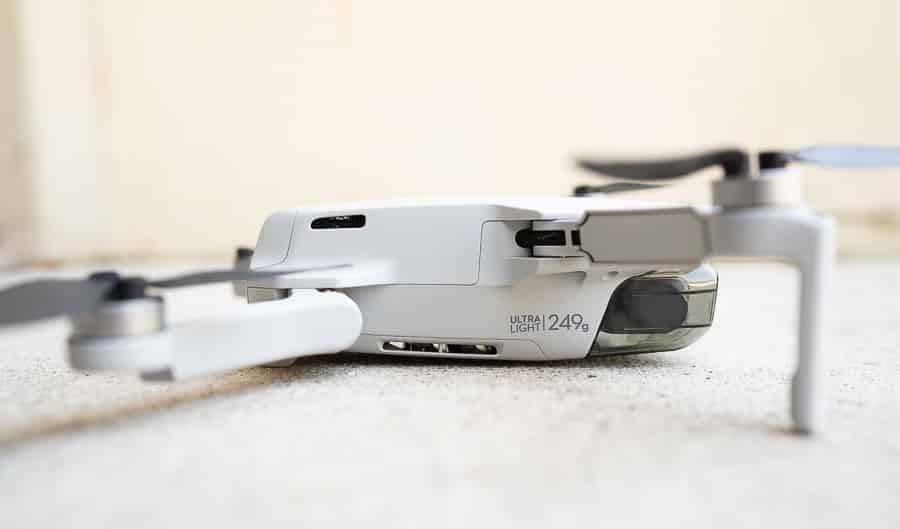
Depending on where you plan to fly the Mavic Mini, its weight can make it a huge advantage.
DJI has been very deliberate about the weight of the Mavic Mini, going as far as to emblazon it with ‘Ultra Light | 249g’ on its side.
This weight places the Mavic Mini in the lowest and safest weight class of drones, which in many countries may exempt it from certain regulations.
Here in 2024, this means that in the United States and Canada, you can fly it without the need to register your drone with the government.
Whether these laws will remain is anyone’s guess, but whatever the case, having a smaller, lighter drone is always a good thing!
Build & Ergonomics
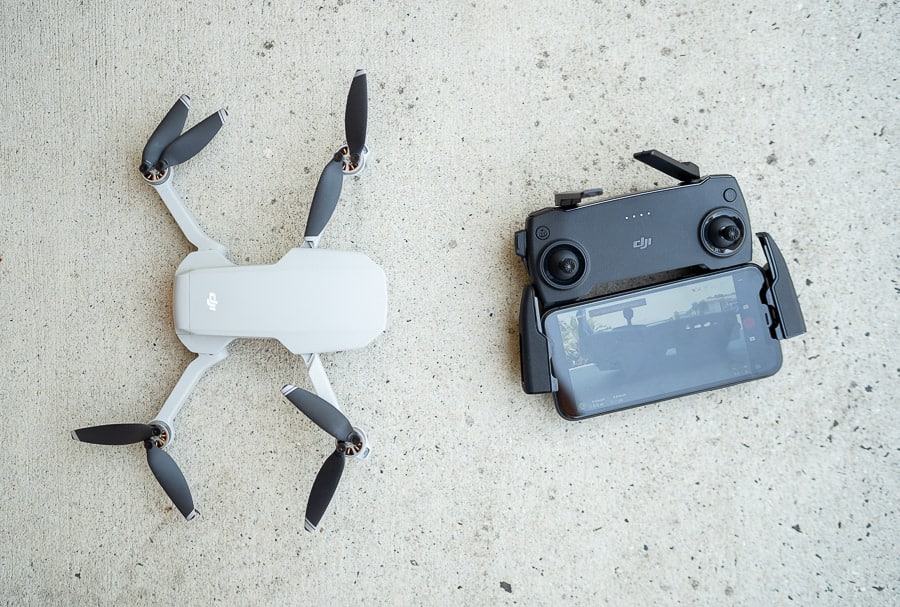
To reduce size and weight, DJI had to go pretty bare-bones with the build of the drone itself.
I was so eager to get my hands on the Mavic Mini that I ordered this one from Amazon, just for the purposes of this review.
Obviously I was expecting it to be tiny… but OMG, if this thing isn’t the daintiest little butterfly of a drone I’ve ever seen!!
Not only is it even smaller in real life than any image can accurately portray, it’s also much lighter than you expect – it’s hard, after all, to explain just how light 249g (8.7 oz) feels.
An iPhone 11 Pro Max is slightly lighter, at 226g (7.97 oz), but here’s the thing – the Mavic Mini in all its flimsy plastic, actually feels even lighter than any smartphone.
I said “flimsy”, and this is the trade off for a super lightweight flying marvel – the Mavic Mini has all the damage resistance of a porcelain cup! This is clearly something you’ll need to be padding very well in your camera bag…
To make matters worse, the feather-light propellers fall outside of the main body of the drone when you handle it, making it feel like you’re going to snap one off at any moment. You can buy a separate ‘Propeller Holder’, but I feel it should have been included in the first place.
To top everything off, the body of the drone is coated in some kind of super-slippery surface (to aid with aerodynamics, perhaps?), giving it all the grip of a wet bar of soap. Handling this thing is pretty dicey, to say the least.
However, of course, when you get the Mavic Mini in the air, none of that should really matter, since its diminutive size, weight, and possibly even its slippery coating mean that it can fly for an impressive 30 minutes!
The Mavic Pro 2 by way of comparison has a flight time of 31 minutes, but weighs a hefty 907g (31.99 oz). (Also check the Mavic Air 2 review, with a flight time of 34 minutes, at 570g (20.1 oz).
My top criteria for traveling with a drone is size and weight. I like to travel with one carry-on bag at all times, and my camera gear and clothing almost max-out my allowance already.
The Mavic Pro Platinum I own is obviously lighter and smaller than the Phantom 4 I tested here for a week, but it’s not light by any means, and together with its controller, does take up a fair bit of space in a bag.
I also owned the DJI Spark which was definitely much lighter (300g/10.58 oz), but also an annoying shape, since you can’t fold in the arms. The image quality was crap too… but then I lost it off the side of a mountain in Spain, so that was the end of that!
So here we have the Mavic Mini, smaller and lighter than the Spark, and with a battery duration that’s on par with the Pro.
I’m now able to have a drone… a frickin drone for Pete’s sake!! in my bag with me every single day, and not even notice its there! Tell me that’s not awesome, dammit!
Performance
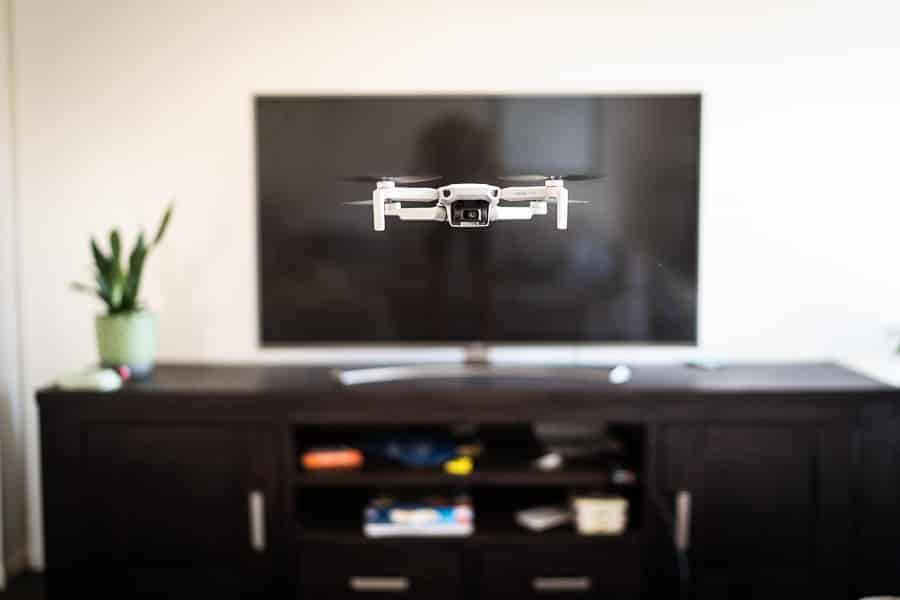
Due to the quietness and size of the Mini, you can use it comfortably inside a room.
As mentioned above, I’ve had experience flying 4 DJI drones – the Phantom 4, the Spark, the Mavic Pro Platinum, and now the Mini.
Aside from the big boy Phantom 4 that felt the snappiest of the lot, I couldn’t really tell all that much difference between the other 3 smaller drones.
As for speed, the bigger drones are obviously a bit faster, but I found the Mavic Mini to be fast enough for my needs, with its 30 mph (48 kmh) top speed (compared to the Pro: 40 mph/65kph).
Why should a photographer be concerned with drone speed? Well, picture a situation where there’s an awesome sunset happening in the distance, and your best vantage point is a mile or two away – you need to step on it!
If you’re a videographer, you may need a faster drone to be able to keep up with the car you’re tracking, but we’re not videographers… which ties in to my comment on the image quality below.
Before we move on though, let me just reiterate how amazing it is that the Mavic Mini has such a long battery life. In my experience, 30 minutes is more than enough to get the shot you need in any situation.
I’ve used drones multiple times at weddings, and know that you need definitely need at least 15 minutes battery life (the Spark had a worrying 16 mins).
Not only will the battery drain much quicker on a windy day, but it’s also nice to keep the drone hovering before/after you get the shot, so you can be on the ground to shoot the other action – I do this a lot, and it feels like I have a second shooter in the sky!
Having a longer battery life also means you can explore the skies for longer, and with the frankly incredible maximum range of 4km (direct line of sight) and max height of over 1km (use with caution!), it means you can do a lot more while airborne.
The noise produced by drones is a big consideration for me – the reason I chose the Mavic Pro Platinum over the regular Pro model was down to the reduced propeller noise, which is quite considerable.
The DJI Spark sounded like a swarm of angry bees (as does the Mavic Air by all accounts), and the Pro Platinum is still loud enough to draw a crowd, but I’m very happy to report that the Mini is the quietest drone I’ve ever used.
At a certain height, you can’t hear it at all… which really opens the door to some stalker-like activity!
I should probably mention at this point that although I do use drones professionally during weddings, and occasionally for my own personal photography, the main reason I choose to invest in them is… drumroll… for fun!
Being able to explore a location like you own your own private mini-helicopter is a luxury everyone needs to experience. The DJI Mavic Mini just happens to make this far easier than ever before.
When I travel for destination weddings, I arrive a few days earlier to scout the area on foot for great photo spots. This includes using a drone to explore from above, and I find this invaluable, and a helluva lot of fun.
Seriously, if you can afford one, just buy one. Whether you need to tell yourself “I’ll use it for work” just to make yourself feel better, just buy one!!
Image Quality
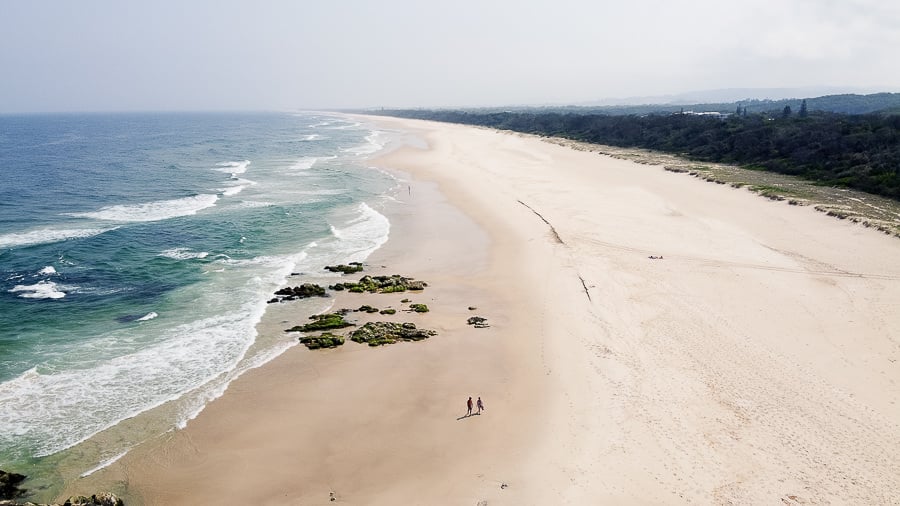
Even in seaside winds, the DJI Mavic Mini does well to maintain a steady shot | 1/2000 f/2.8 ISO 100 (16:9 crop)
As photographers, image quality is usually our number one criteria when buying a new camera.
However, when buying a drone, image quality isn’t top of my list (size/weight/portability is).
I’ve seen images out of the Mavic Pro 2, and photographed extensively with the 3 aforementioned drones, and have come to this conclusion: Until DJI produces a drone with a full frame sensor, there’s really not that much difference in stills quality.
You know when Canon and Nikon released their mirrorless full frame bodies, and the whole Internet was like: “WTF, just ONE SD card slot?! NFW!”? Well, what I’m about to tell you will elicit the same reaction.
The DJI Mavic Mini only shoots stills in JPG. There’s no RAW.
You still here? Good, coz it really ain’t that bad – allow me to explain.
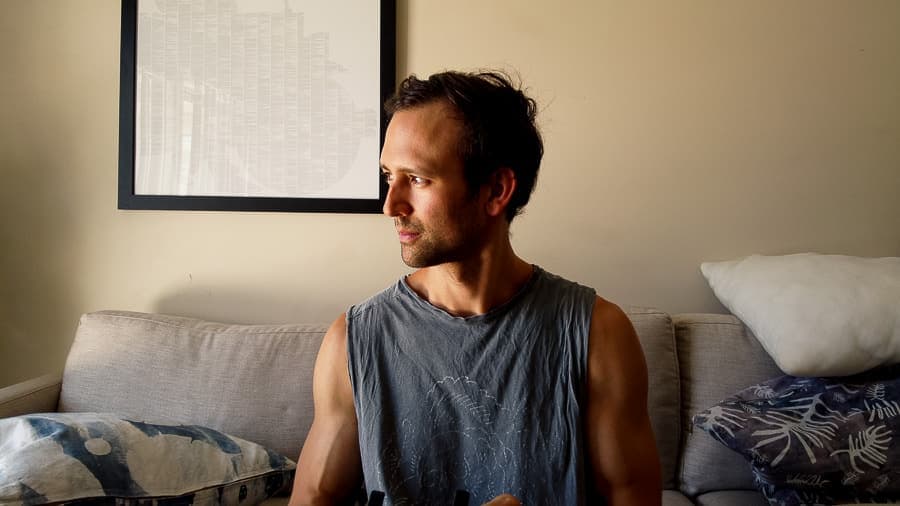
The Mini was hovering 50cm from my face to take this | 1/25 f/2.8 ISO 100 (16:9 crop)
My Mavic Pro Platinum has RAW capability, and I obviously always use it, just because it’s there. However, as anyone who knows anything about camera sensor size will tell you, just because a camera can shoot in RAW, doesn’t mean you suddenly have an amazing camera.
Even with the slightly bigger sensor of the Mavic 2 Pro, the RAWs don’t offer significant advantages for most professional photographers. If you blow a highlight or crush a shadow… you’re screwed. Ain’t no magical dynamic range happening here, bro.
So yeah, having RAW on the Mavic Mini would’ve been nice to be to able to push and pull those files just a little bit more, but listen to me on this one – it ain’t no deal-breaker, and this is coming from someone who completely appreciates the advantages of RAW vs JPG files.
The JPGs out of the Mini are… fine. What I mean by this is that I can edit them enough, recover some lost details, and confidently deliver any of the files to my clients.
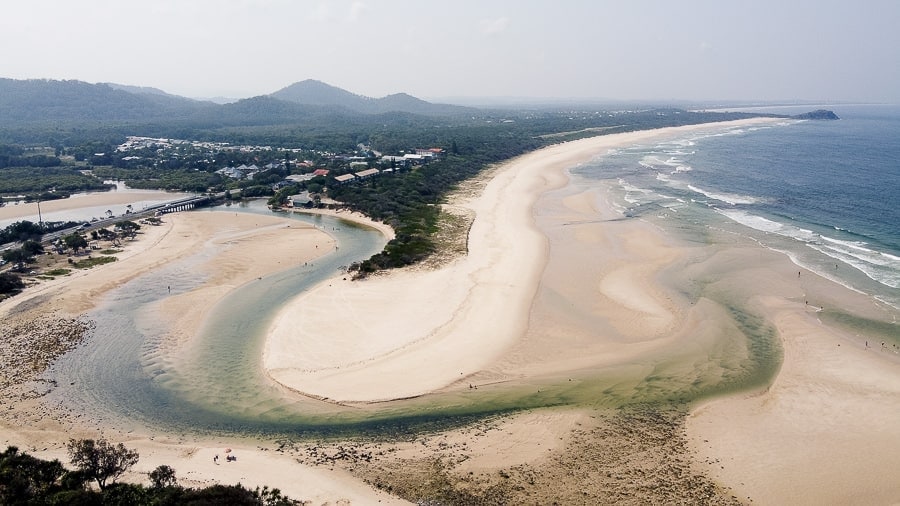
The wide angle lens allows you to get a lot in the shot | 1/2000 f/2.8 ISO 100 (16:9 crop)
There’s clearly a quality difference between an image shot with a drone and your expensive camera, but like I said, until we get full frame sensors in tiny little drones like this, there’s not much we can do about this.
One thing I would like is a few more megapixels, though. The Mavic Mini offers 12MP stills (which is the same as the Mavic Pro and the Mavic 2 Zoom), whereas the Mavic 2 Pro offers 20.
More megapixels in this instance would be useful for cropping in post, and having just 12 leaves you very little room to manoeuvre, depending on your end needs, of course.
(I recently discovered a great tool to losslessly enlarge images, and it’s especially useful for blowing up the 12MP stills out of the Mini – check out the Topaz Gigapixel Review to learn more.)
The native aspect ratio out of any DJI drone is 4:3, with the option of 16:9, which essentially crops the original image. I much prefer 16:9 which gives a cinematic look to your images, but this leaves the Mini’s images at only 9MP.
The lack of RAW support and limited mega pixel offering is clearly DJI’s attempt at safe-guarding its various product offerings. If they’d given you everything and the kitchen sink with the Mini, they’d be shooting themselves in the foot – no one would buy the other models!

Top down photos always look good | 1/2000 f/2.8 ISO 100 (16:9 crop)
However, I really don’t think these shortcomings in the image department are a big deal. For the other huge advantages explained in this review, it’s definitely worth the slight sacrifice.
OH, I almost forgot to mention – the Mavic Mini shoots video too! Who’da thought?!
The only thing I’ll say here is that you might be bothered by the fact that it only shoots 2.7K/30p or 1080/60p, whereas the big boys shoots 4K at various frame rates.
However, as this is a review for photographers, should anyone really care? The video footage at 1080P looks amazing to me, and there are tons of samples on YouTube that attest to this.
In addition, editing 4k video footage can really slow down your workflow, just like trying to process a load of 50MP stills images can.
If you’re a video guy who needs 4k for whatever reason, so be it, move on. However, for us photographers, we’re still cool with 1080P, especially when it’s out of a flying camera.
Ease of Use
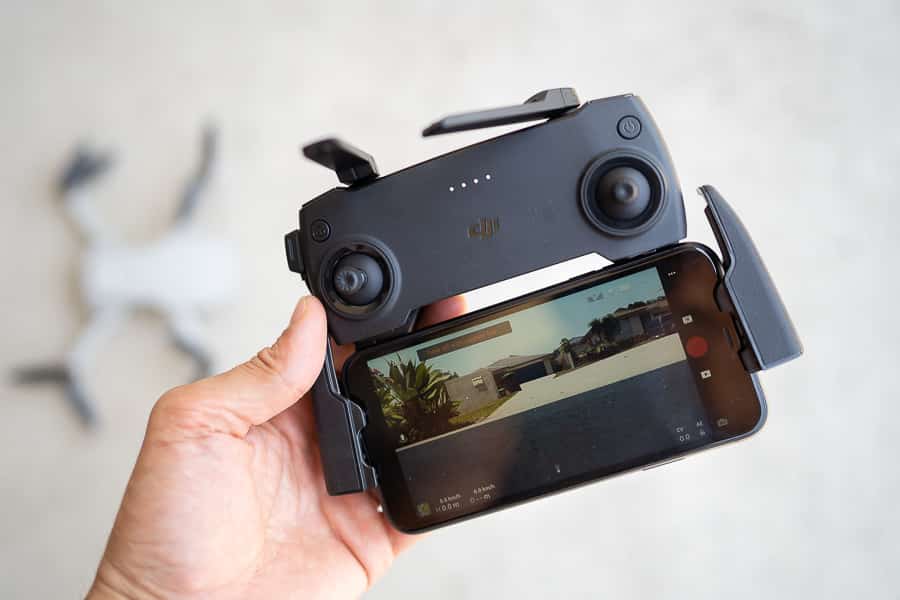
The new DJI Fly app is a dumbed-down version of DJI Go… and I much prefer it.
This thing is seriously easy to use. Once you’ve gone through the annoying but inevitable DJI ‘firmware update bonanza’, you’re ready to rock and roll – just fold out the Mini’s little arms (aww aren’t they cute?!), turn the remote and the drone on, and everything pairs in a few seconds.
I won’t go into how to fly the Mavic Mini here, as it’s the same as every other DJI drone in that respect. You’ll need to practice a bit to get the hang of flying a drone, but it’s easy to pick up, especially if you have no interest in shooting professional video.
(Just for the record, the Mavic Mini offers some fun ‘QuickShot’ video effects: Helix, Dronie, etc., but manually shooting compelling video while flying takes a lot of skill. )
Taking photos is a cinch. Full manual control for exposure is a couple of taps away, and it’s nice to have a dedicated shutter button on the top of the remote.
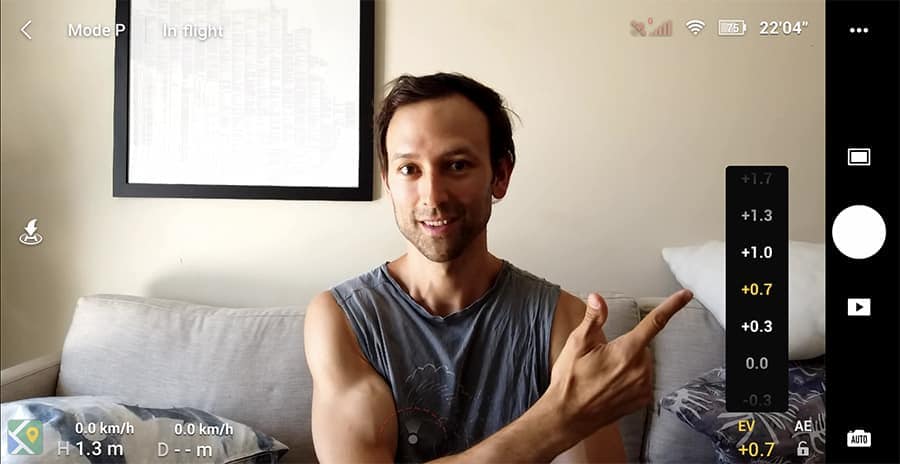
Screen capture from iPhone 11 of the DJI Fly app’s Exposure Compensation mode.
There’s no LCD screen on the remote like there is on a Mavic Pro, but to be honest, I never used mine anyway and was just another thing that would get scratched in my camera bag.
I actually prefer the simplicity of having nothing there – the LCD screen always felt like something you should be using, but didn’t quite know why…
(You can read more about the New Fly app on MyDearDrone.)
The gimbal cover design has changed since the Mavic Pros, and while is easier to get on and off than all other models I’ve tried, it’s still not great.
Speaking of the gimbal, it offers 3-axis image stabilization, compared to the DJI Spark which only had 2.

The control sticks are stored neatly inside the remote-control when not in use.
I like the way you can store the controller ‘sticks’ in the actual remote-control unit when not being used – this allows you to store the controller much easier than before, where the sticks would be jutting out and in danger of being bent the wrong way.
To keep you safe while flying, there are various technologies at work in the background to ensure you don’t break any laws.
One thing to note though is that the Mavic Mini doesn’t come equipped with obstacle avoidance sensors in the front and back – only on the bottom. This makes me slightly nervous when flying the drone out of the line of sight… but as long as I pay attention to the screen, everything should be sweet.
The Mavic Mini uses the new DJI Fly app, which is designed for beginners, placing all the most important features within easy reach – nothing is hidden away behind multiple menus like it is with the more complicated DJI Go app.
The Mavic Mini is clearly marketed to people who’ve never flown a drone before, with everything dumbed down. Even though I’ve had a few years of drone flying experience, I actually appreciate this level of simplicity, and find using the DJI Fly app to fly the Mini much easier and more enjoyable than before.
Just like with previous small DJI drones, you can charge the battery of the Mavic Mini with a mini-USB cable. This means that you can use any portable battery charger (like the one you already use to charge your phone), to top up its battery, which is pretty handy. Same goes for the controller.
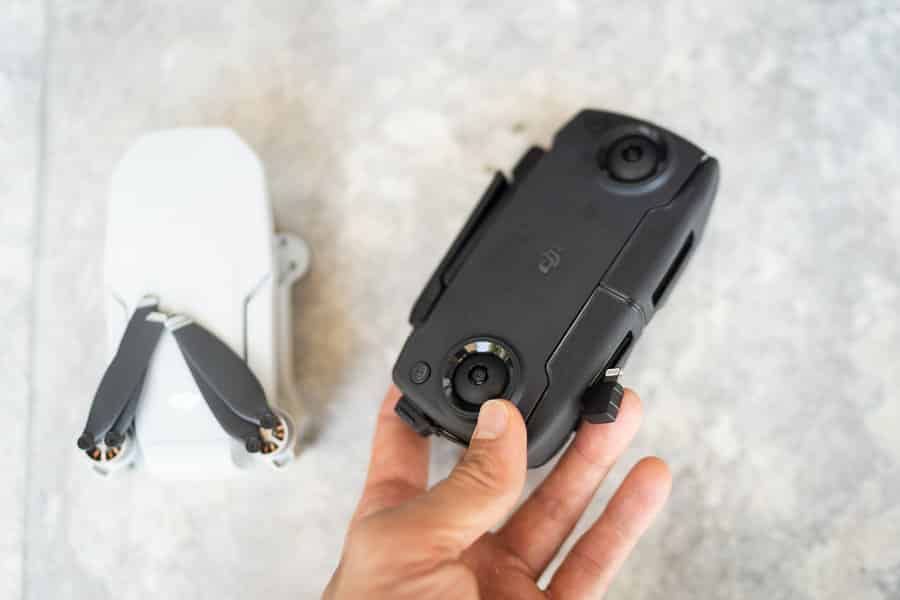
The smartphone connector and tends to hang outside the remote, which can be annoying.
One thing that annoys me with the remote is the fiddly connecting cable for your smartphone (you use your phone’s screen as the monitor of the drone, so you can ‘see what it sees’).
I’ve always found the connection to be fiddly on every DJI drone I’ve used, but this one is especially weird, with the connecting cable hanging awkwardly in the remote when not in use.
If I shot video professionally, I’d definitely invest in this ‘Smart Controller’, which is a much neater solution, but one that isn’t compatible with the Mini… but then again, if I shot video for a living, I’d have another 4k drone altogether. Let’s move on, shall we?!
Value for Money
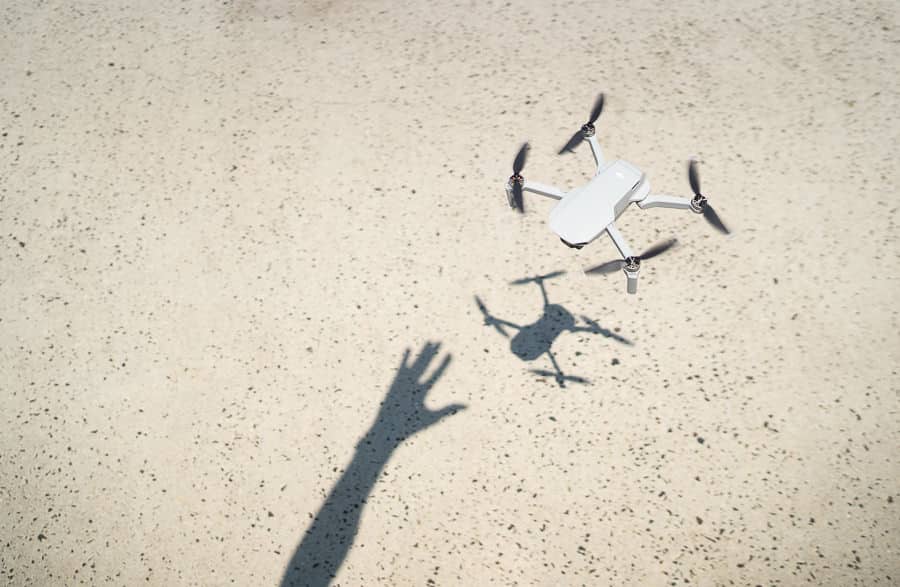
The price of the DJI Mavic Mini really makes it an absolute steal.
This is the best bit – the Mavic Mini costs less than 400 bucks!!. I literally can’t believe how cheap this is.
By comparison, the discontinued Spark that no one cares about any more is currently $589.99 on Amazon, and the Mavic Air is still over twice the price, at around $765!
The Mavic Pros on the other hand are all over a grand, putting them in another category altogether.
I am so excited by the Mavic Mini, and the opportunity it presents to photographers of all standards. Under $400 for all this performance and convenience represents incredible value for money, and an absolute steal in 2024.
Seriously – if the Mini cost over a grand, I’d still buy it, and I’m not just saying that. I’m so happy DJI chose such an aggressive price point, which will hopefully discourage all the other cheap knock-offs from producing their crappy versions.
Sure, it’s built like a slippery newborn baby, and it’d be nice to have RAW capabilities, but these cons are so insignificant when you have such a tiny device which is able to fly for so long. The fact that it costs less than most cameras is just the icing on the cake…
I’d highly recommend you stump up the extra dollar for the Fly More Combo or an accessory pack – here’s the best one that includes a memory card, bag, landing pad and some other goodies too, for not much more than the regular combo.
The combos include various gadgets, the most useful of which is the multiple batteries + charger unit, keeping you flying for much longer, and giving you the ability to charge multiple batteries at once.
Mavic Mini vs Other Drones

Mavic Pro Platinum | Mavic 2 Pro | Mavic Air | Mavic Mini (Source: DJI)
DJI offers several drones in the Mavic series, making a decision on which one to purchase rather confusing.
The Pro models (Mavic Pro Platinum, Mavic 2 Pro, Mavic 2 Zoom) are all heavier, bigger, and offer more features for the professional videographer.
As I’ve mentioned in this review, it’s debatable whether the benefit of RAW over JPEG in sensors of this size is really so relevant for us stills (drone) photographers.
So the real comparison is between the smaller and lighter Mavic Mini and Air models.
Mavic Mini vs Mavic Air
| Mavic Mini | Mavic Air | |
| Design | Foldable | Foldable |
| Weight | 249 g | 430 g |
| Dimensions (folded) | 140*82*57 mm | 168*83*49 mm |
| Stabilization | 3-Axis Gimbal | 3-Axis Gimbal |
| Video | 2.7K/30fps at 40 Mbps | 4K/30fps at 100 Mbps |
| Camera | 1/2.3” CMOS, 12 MP RAW+JPG | 1/2.3” CMOS, 12 MP JPG |
| Max. Transmission | 4 km | 4 km |
| Max. Flight Time | 30 minutes | 21 minutes |
| Price | Approx $399 | Approx $717 |
In addition to the differences above, the Mavic Air has 3 vision sensors (forward, backward and downward), while the Mavic Mini only offers the downward sensors.
This means that the Mini doesn’t offer Active Track, whereas the Air offers ‘Profile’ tracking, whereby the drone can follow and track you from the side, rather than from behind or in front, which is more the domain of the Pro models.
From my own experience, Active Track is fun, but definitely still very glitchy – you can’t rely on it to have the drone follow you skiing or driving a car, for example.
It’s also pretty much useless for us stills photographers, so I really don’t miss not having it on the Mavic Mini .
- How high can the Mavic Mini fly?
The Mavic Mini can fly up to 120 meters (around 393.701 ft!), which is the default setting. However, you can increase the height altitude in the app to 500 meters (1640.42 ft) or more.
But that’s not recommended, as the drone will be more susceptible to different weather elements.
Final Words
As you can probably already tell, I frickin’ love this little thing! Embarrassingly enough, I actually got up at 3am to write this Mavic Mini review, such was my excitement to tell you about it!
Sure, there are some minor shortcomings, but these are utterly insignificant in the grand scheme of things.
Take a step back for a moment – we’re in 2024, and we can carry around something in a jacket pocket that allows us to fly 4km away to take photos and videos from up to 500m in the air. That, ladies and gentleman, is nothing short of mind-blowing.
The fact that the Mavic Mini is affordable and one of the cheapest drones available today, should make you very happy. It makes me very happy, and I’m smiling all the way to Gumtree to sell my Mavic Pro.
From now on, I’ll have the Mini and its controller in my camera backpack on every outing. When it’s not there, it’ll be sitting in the glove box of our car.
Having the option to take photos from the sky whenever we want, be it for professional use or otherwise, is truly incredible, and something I think we should all be making the most of.

Powerful, light, affordable, fun: this pocket-size drone is every photographer’s new favourite toy.





